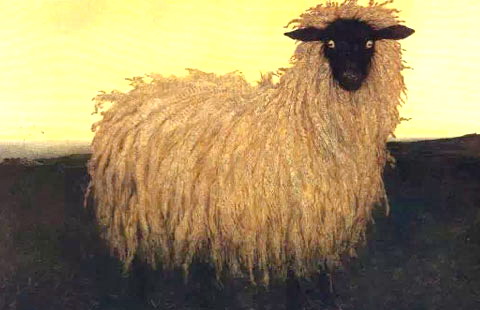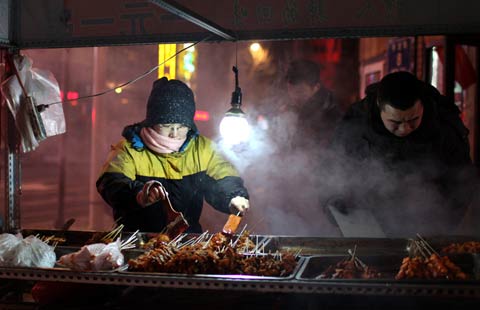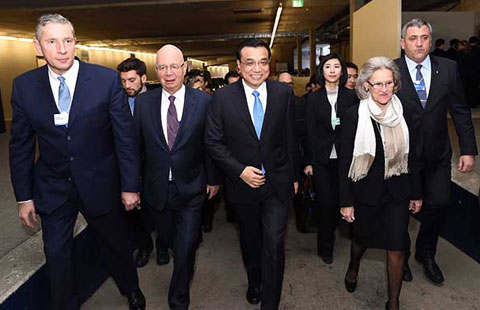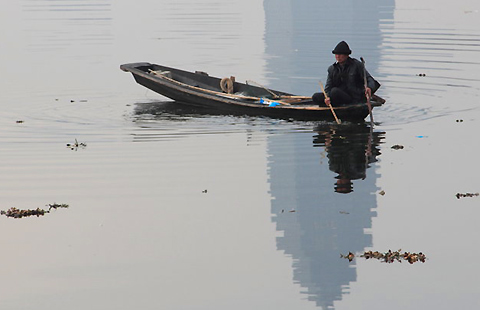
China's industrial slowdown has hit resources supplies hard, expert says
Trade between China and South Africa dropped sharply last year, mainly the result of declining international commodity prices.
Trade between the two was worth $60.3 billion, 7.6 percent less than in 2013, China's General Administration of Customs says.
Yu Bin, director of the department of macroeconomic research at the State Council Development Research Center, says the industrial slowdown in China has dealt a severe blow to global commodity suppliers such as South Africa, Angola and Nigeria.
The main exports of South Africa to China are pharmaceutical products, medical equipment, wine, chemicals, crude oil and mining resources such as iron ore and copper.
Living materials, steel, consumer electronics, machinery and automotive parts have figured prominently among China's exports to South Africa in recent years.
"This lull may continue for a certain time this year because there is no headwind for higher economic growth," Yu says. "China's imports of natural resources and energy will not rise that much over the next three years because the country is readjusting its economic structure to be more green."
China's imports from South Africa fell 7.8 percent last year from a year earlier, and its exports to South Africa fell 6.7 percent, according to official figures.
The International Monetary Fund forecast last month that growth in sub-Saharan Africa will be weaker this year because some of its largest economies, such as South Africa, Ghana, Kenya and Nigeria, are struggling with the depreciation of their currencies and with weaker external demand.
"China's resources boom ended last year," says Zhao Ying, a researcher at the Chinese Academy of Social Sciences in Beijing.
"Though the exports of resources and commodities have risen, the prices we receive for them have fallen almost 20 percent since their peak and may well fall further."
China imported 308.38 million metric tons of crude oil last year, even as import prices fell 7 percent.
The volume of copper imports rose 10 percent last year from a year earlier, the average import price falling 3.7 percent year-on-year. The volume of iron ore imports fell 8 percent, and the import price fell 5 percent compared with the previous year, the customs administration says.
The 4-trillion yuan ($652 billion) emergency stimulus package launched by the Chinese government during the global financial crisis boosted infrastructure construction and the import of natural resources and raw materials. However, the country's current leaders are keen on shifting economic growth from being investment and export driven to consumption driven.
"Reduced industrial activity in China has subdued imports of raw materials," Zhao says. "Meanwhile, overcapacity in industries such as steel, cement, shipbuilding and photovoltaics has reduced business profitability businesses and the demand for raw materials."
Bheki Langa, South Africa's Ambassador to China, says South Africa is looking to foster a more balanced and sustainable trade relationship with China. South Africa will continue to place emphasis on value-added trade, as opposed to the country being merely a source of raw materials, he says.
"We have noticed a slow shift in the makeup of our exports, and although the value of exports to China is still negligible, we believe that over time the patterns of trade will change."
South Africa has been looking forward to China buying products made in Africa to come out of a future trilateral free trade area covering 26 countries in southern, eastern and central Africa.
"The free trade area, currently being worked on by the East African Community, the Common Market for Eastern and the Central Africa and Southern African Development Community, will expand South Africa's market from $50 million to $600 million, placing us in a similar category in terms of market size as our BRICS partners," Langa says.
zhongnan@chinadaily.com.cn
|
Shantui, a machinery maker in China's Shandong province, displays its construction machinery in Johannesburg. Li Qihua / Xinhua |
(China Daily Africa Weekly 01/23/2015 page7)








